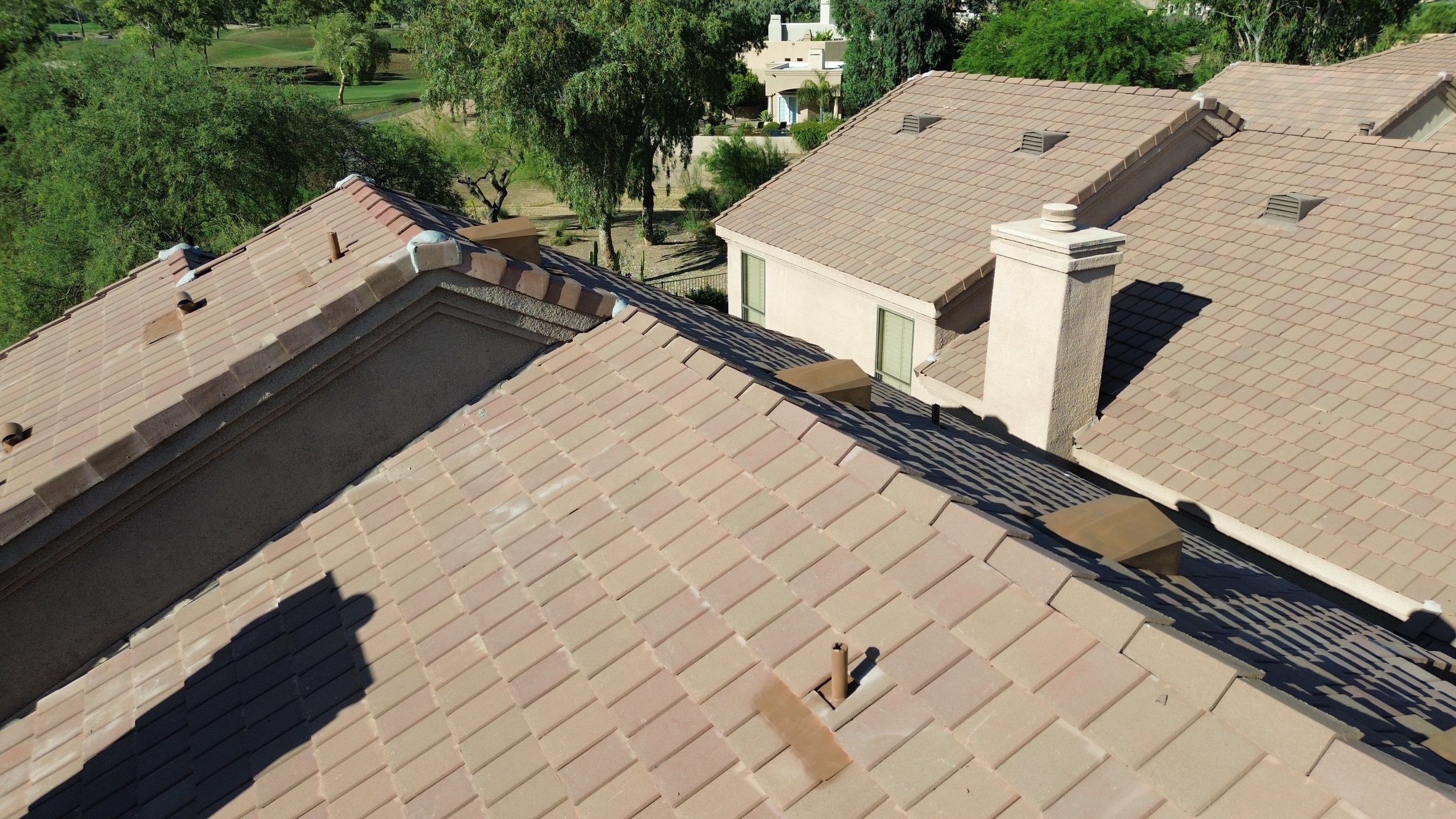Understanding the Anatomy of a Roof
A roof's shingles (or tiles) are the top layer.
A roof is more than just the shingles you see from the curb—it’s a complex system of layers and components, each playing a top role in protecting your home from the elements. Whether you’re a homeowner curious about what’s above your head or preparing for a roof replacement, understanding the anatomy of a roof can help you make educated decisions and communicate more effectively with your roofing professional. Let’s break down the basic roof layers, explore the differences between shingle, metal, and flat roofs, and highlight why professional installation and repairs are essential.
Basic Roof Layers: From the Deck Up
Regardless of its style or material, every roof is built on a foundation of layers that work together to keep your home dry, insulated, and secure. Here’s a look at the primary components, starting from the bottom:
The Deck
The deck is the backbone of your roof. Often made from plywood or oriented strand board (OSB), the deck forms the solid surface to which all other roofing materials are attached. It provides structural support and a stable base for the layers above. Roof decks are only visible during construction or major repairs, as protective materials quickly cover them. While the deck itself isn’t weatherproof, its strength is critical for the longevity and performance of your entire roofing system.
The Underlayment
Directly above the deck lies the underlayment, which performs as a secondary barrier against water infiltration. Traditionally, underlayment was made from felt paper, but modern options include synthetic materials designed for superior moisture resistance and durability. The underlayment’s main job is to prevent water from reaching the deck if rain or snow passes the outer roofing material. It also provides a smooth surface for installing shingles or other roof coverings.
The Shingles (or Tiles, Panels, or Membrane)
Most people notice the outermost layer of your roof first. These are often asphalt shingles for pitched roofs, but they can also be slate, wood shakes, clay tiles, or metal panels, depending on your home’s style and preferences. On flat roofs, a waterproof membrane or built-up roofing system is used instead. This top layer is your roof’s first line of defense against wind, rain, snow, and UV rays. It also donates significantly to your home’s curb appeal.
The Flashing
Flashing is a thin metal material (usually aluminum or galvanized steel) installed at joints, valleys, chimneys, vents, and other areas where the roof surface is interrupted. Its purpose is to direct water away from these vulnerable spots, preventing leaks and water damage. Properly installed flashing is essential for a watertight roof, particularly in areas with heavy rainfall or snow.
The Drip Edge
The drip edge is a metal strip inducted along the edges of your roof. It ensures water flows off the roof and into the gutters rather than seeping under the shingles or running down the fascia. Drip edges help protect the underlying structure from rot and water damage, and most modern building codes require them.
Ventilation and Insulation
While not always considered part of the visible roof anatomy, proper ventilation, and insulation are crucial to the health of your roofing system. Roof vents (such as ridge vents, soffit vents, or attic fans) allow hot, moist air to escape from the attic, reducing the risk of mold, ice dams, and premature shingle aging. Adequate insulation keeps your house comfortable and energy-efficient, halting heat loss in winter and heat gain in summer.
Anatomy of a Shingle Roof
The most common residential roof in North America is the asphalt shingle roof. Its anatomy typically includes:
Roof deck (plywood or OSB)
Ice and water shield (in vulnerable areas, such as eaves and valleys)
Underlayment (felt or synthetic)
Starter strip shingles (along the eaves)
Asphalt shingles (main roof covering)
Ridge cap shingles (at the peak)
Flashing (around penetrations and valleys)
Drip edge (at eaves and rakes)
Roof vents (for attic ventilation)
Shingle roofs are popular for their affordability, ease of installation, and broad range of colors and styles.
Anatomy of a Metal Roof
Metal roofs are gaining popularity for their durability, energy efficiency, and modern appearance. The anatomy of a metal roof includes:
Roof deck (plywood or OSB)
Underlayment (often synthetic, sometimes with a slip sheet)
Metal panels or shingles (steel, aluminum, copper, or zinc)
Fasteners and clips (to secure panels)
Flashing (at seams, valleys, and penetrations)
Ridge cap (to seal the peak)
Drip edge (to direct water runoff)
Roof vents (for ventilation)
Metal roofs can be installed as standing seam panels, corrugated sheets, or metal shingles, each requiring specific installation techniques to ensure a watertight seal.
Anatomy of a Flat Roof
Flat roofs are often established in commercial buildings and some modern homes. Their anatomy is distinct from pitched roofs and typically includes:
Roof deck (often concrete or wood)
Vapor barrier (to prevent moisture migration)
Insulation (for energy efficiency)
Roofing membrane (such as modified bitumen, EPDM rubber, or TPO)
Flashing (at edges and penetrations)
Gravel or pavers (sometimes used for additional protection or aesthetics)
Roof drains or scuppers (to channel water off the roof)
Flat roofs require precise installation to secure proper drainage and stop water pooling, which can lead to leaks and premature failure.
How Many Layers of Material Does a Roof Have?
The number of layers on a roof can vary depending on the type of roof, local building codes, and whether the roof is new or a replacement. Modern residential roofs have at least four main layers: deck, underlayment, primary roofing material (shingles, tiles, or panels), and flashing/drip edge. Extra layers, such as ice and water shields or extra insulation, may be included for added protection in specific climates or roof designs.
Roofing Techniques and the Importance of Professional Installation
Proper roofing techniques are essential for the longevity and performance of your roof. Each layer must be installed carefully, using the correct materials and methods for your specific roof type. For example, shingle roofs require precise overlapping and nailing patterns, while metal roofs need secure fastening and expansion allowances. Flat roofs demand expert membrane application and meticulous sealing around penetrations.
Because of the complexity and safety risks with roofing, experienced professionals should always handle roof installation and repairs. Attempting DIY repairs or installations can lead to leaks, voided warranties, and even structural damage.
Understanding the anatomy of a roof gives you insight into how each layer and component works together to protect your home. Regardless if you have a shingle, metal, or flat roof, every part—from the deck to the drip edge—plays a vital role in keeping your home safe, dry, and energy-efficient.
If the roof needs repair, maintenance, or replacement, trust a qualified roofing contractor to assess your system and recommend the best solutions. With professional care and high-quality materials, your roof will continue to safeguard your home from the elements for years.
Irish Roofing Company provides Scottsdale with residential tile roof installation and replacement, shingle roof installation and replacement, metal roof installation and replacement, roof repair, roofing maintenance, and roof inspection services. Count on our uniformed, knowledgeable, and experienced roofers for high-quality roofing solutions.

